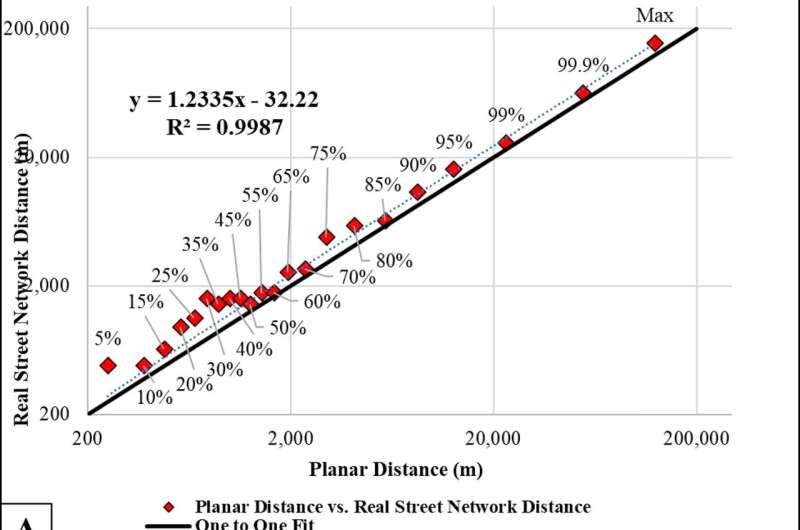This article has been reviewed according to Science X's editorial process and policies. Editors have highlighted the following attributes while ensuring the content's credibility:
fact-checked
peer-reviewed publication
trusted source
proofread
Pharmacy closures found to be impacting medically underserved communities

Pharmacies have long been considered a cornerstone of community health care, but they're closing in record numbers across the country. A new study led by researchers at the University of Houston Tilman J. Fertitta Family College of Medicine sheds light on the alarming impact these closures are having, especially on medically underserved areas.
"Pharmacy closures disproportionately affect underserved neighborhoods, deepening existing health disparities," said lead study author Dr. Omolola Adepoju, a clinical associate professor and director of research at the Humana Integrated Health System Sciences Institute. The work is published in the scientific journal PLOS ONE. "Our study underscores the need for targeted solutions to ensure equitable access to health care for all."
For most communities, pharmacies are vital health care hubs that offer a range of services beyond just the dispensing of medications. They also provide critical immunizations, medical education and advice. According to a previous study from the University of Illinois at Chicago, from 2009 to 2015, nearly 10,000 pharmacies in the U.S. closed, including one in four pharmacies in low-income areas.
That trend has continued as more people are ordering prescriptions online and independent pharmacies are excluded from preferred pharmacy networks. The result, Adepoju says, are pharmacy deserts in communities that need them most.
"Pharmacies have always been the frontline health care access points for families in medically underserved areas, but that's going away," Adepoju said. "In these areas, which are mostly minority communities with serious socioeconomic challenges, it is adding to existing health care disparities. "

Similar to food deserts, pharmacy deserts are described as low-income, urban neighborhoods with no pharmacy within a mile for people with a vehicle, or within a half-mile for people without a vehicle. In Houston's Third Ward neighborhood, the study found the nearest pharmacy was two miles away, or four-times further than more affluent neighborhoods nearby, like Midtown, where residents had three pharmacies within a mile.
"That added distance can have serious consequences," said study co-author Adebosola Karunwi, a third-year medical student from Houston. "A diabetic who faces a long walk or multiple bus rides to get their insulin prescription filled might not do it, instead skipping doses or blood tests."
Adepoju and Karunwi hope their study serves as a call to action by highlighting the urgent need for collaborative efforts from policy makers, health care providers and community stakeholders to ensure every person, regardless of their means, has equal access to the crucial services.
"We must address this issue by considering not just the economic impact of closures but also the broader health outcomes of the affected communities," Adepoju said. "Our research provides critical insights that can inform policy decisions and improve equitable health care access."
To help close the gap in pharmacy access, the researchers suggest improving partnerships between health care and prescription providers and better identification of patients with limited access. Additionally, they urge community leaders to lobby for pharmacy expansion and to apply for government funding to establish pharmacies in existing spaces, such as churches and community centers.
"We're already seeing hospitals using services like UberHealth to deliver medications and get people to their appointments," Karunwi said. "But more needs to be done. In this day and age, there's no reason anyone shouldn't be able to get the health care they deserve."
More information: Omolola E. Adepoju et al, Rethinking access to care: A spatial-economic analysis of the potential impact of pharmacy closures in the United States, PLOS ONE (2023). DOI: 10.1371/journal.pone.0289284




















